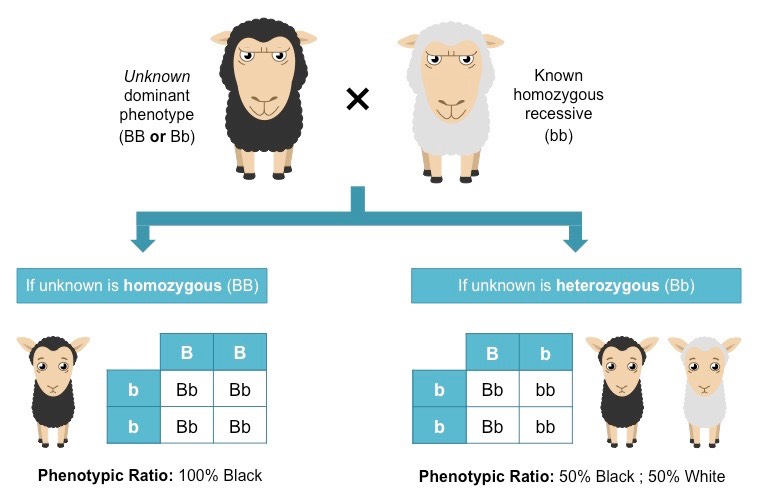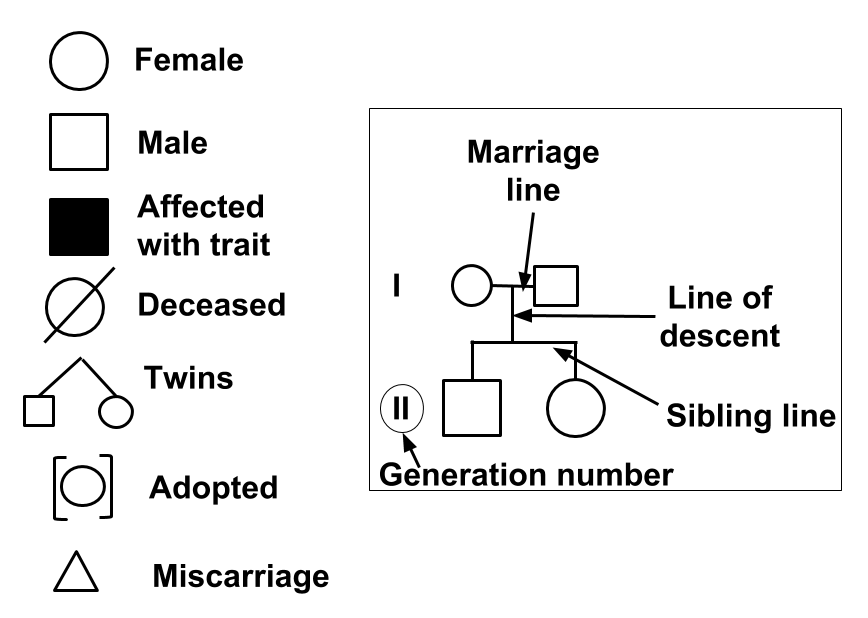Topic 3 - Gene Expression
Genome
Genome - All genetic material in chromosone of an organsim
evey cell (except red blood cells + gamets) contain full blueprint (genome)
Gene - Section of DNA that codes for a protein
Structural genes code for all proteins (e.g. enzymes)
Except with a regulatory function
Regulatory genes code for proteins and micro RNAs that control how other genes are expressed e.g. HOX and SRY genes
Non-Coding DNA does not code for proteins
Important in controling gene activity
*Mature RNA has introns removed and so is shorter than pre-mRna
Has a virety of biochemical and structual functions:
- Rugulating sequences that influence gene expression (prometer/enhancer)
- Adding end caps to each chromosne (telomeres) which increase stability
- Forming the centromere to hold chromosones together
- Developing the orgin and terminus sequence involved in chromosne replication
Eukaryotic Gene Structure
- Structural genes are controlled by regulatory sequences
- each structural gene is incolsed by untranslated regions (UTR’s)
There are 20 diffrent amino acids which are builiding blovks of protiens
Dna sequence→ amino acid sequenc → po
Gene Expression aka
Protien sythesis
Genes that provid instruction for protiens are expressed in a two-step process
- Transcription, the DNA sequence of a gene is rewritten in mRNA inside the nucleus
- Translation, the sequence of nucleotides in the mRNA is “translated” into a sequence of amino acids in a polypedtide (protein chain) at ribosomes cytoplasm
Epigentic Facotrs and Gene Expression
Epigenome acts by producing chemical tags or factors (methyl or acetyl groups) that determine which genes are switiched on (expressed) and which are switched odd (repressed).
Hox Genes and Morphogensis
The regulation of anatomical develepment is called morphogensis.
Hometic genes and genes in cells that determine which anatomical structure of the body, cells will diffrentiate into.
Hox Genes (Sube group of homeotic genes)-
- Turn other genes on or odd using transcription factors, and control gene expression
- Control the body plan and segmentation of an ambryo along the head-tail axis
- are involved in the regulation of anatomical development in animals plants and fungi
Hox proties (products of Hox genes) control the type of appendages that will form on a segment
Mutation in a Hox gene may cause growth of an extra body part
Homeobox Genes
- Homeobox geneses are a group of genes wich all contain a homeobox
- a homeobox is 180 BP (Base Pairs) section of DNA which codes for part of a protien 60 AA (Amino Acids) long
- The Homeodomian bins DNA, switching genes on and off, and is therefore reugulatory
- They are found in plants, animals and fungi
- they contain homeobox sequences which are highly conserved
PAX6 - Retina Development
- When this is mutated it causes blindness in humans, mice and fruit flies.
- Is the homeobox specific to the retina
Hox Genes (a subset of homeobox genes) code for protines which control the body plan in animals
A body plan is the general structure of an organisim and follows symmetry
Apoptosis is a hilly controlles process with numerous triggers
- enzymes break down cell components such as portion and DNA
- The cells shrinks and breaks into fragments
- Phagocytes engulf and digest the fragments
Biological diffrences that exist between sexes result from presence or absence of a Y chromosome
- All embroys develop as females (deafult) unless genes present on Y chromosome trigger male sex development
- Males posses the SRY gene (on Y chromosome), which synthesis testis determing factor (TDF) whcih causes a foetus to develop male gonads (testes) in weeks 6-8
- Testes produce a hormone called MIF (Mullerian inhibiting Factor), which causes degereneration of female organs
- Testes also produce testosterone which promotes the development of male sex characterics by weeks 8-12
- Females do not posses sry gene (no Y chromosome), so dont produce the TDF or form testes
- Consequently MIF is not produced and female organs are allowed to fully develop
- Ovaries dont produce testosterone and so female sex characterstic develop
Mutation
Every time a human cell divides and its DNA replicates, it has to copy and transmit the exact same sequence of 3 billion nucleotides to its daughter cells. While most DNA replicates normally, mistakes do happen, with polymerase enzymes sometimes inserting the wrong nucleotide or too many or too few nucleotides into a sequence. Fortunately, most of these mistakes are fixed through various DNA repair processes. Repair enzymes recognise structural imperfections between improperly paired nucleotides, cutting out the wrong ones and putting the right ones in their place. But some replication errors make it past these mechanisms, thus becoming permanent mutations.
- Substution
- This is a point mutation and can be silent, missense, or nonsene mutations
- Silent mutations occur when it does not alter the amino acid sequence
- Missense mutations occur when the DNA change alters a single amino acid in the polypeptide chain
- Nonsense Mutations occur when there is a premature stop codon wich truncates the polypeptide
Frame shift - Due to the triplet nature of gene expression by codons, the insertion or deletion can change the reading frame (the grouping of the codons), resulting in a completely different translation from the original.
- Insertion
- Deletion
- Inversion
Triplicate bases code for an amino acid, any change in their order will effect the final protien. As the amino acids will not fold in the same way.
Types of Mutations:
- Neutural (Silent)
- When the amino acid does not change
- The mutation produces a diffrent amino acid but is chemically similar
- The codon effected is not involved in the protiens function
- Beneficial
- Mutation in rare cases causes benefical effects
- Harmful
- Sickle Cell Anaemia
- a missense mutation the changes the structure of red blood cells and has harmful effects\
Block mutation
- Duplication - section gets duplicated
- Deletion - a section is broken off and lost
- Cri-du-chat
- Inversion - a section breaks off, flips and is reinserted
- Translocation - section breaks off and joins another non-homologous cromosome
Nondisjunction results in daughter cells with abnormal chromosome numbers (known as aneuploidy).
- the failure of a pair of homologous chromosomes to separate in meiosis I
- the failure of sister chromatids to separate during meiosis II
- the failure of sister chromatids to separate during mitosisn
Karyotyping
- Karyotyping is the process of pairing and ordering all the chromosomes of an organism, thus providing a genome-wide snapshot of an individual's chromosomes.
Cause and effects of mutations
Mutagen - Causes changes to the nucleotide base sequences
Carcinogen - Causes Cancer
- Hereditary mutation : inherited from a parent, present throught life and found in virtually every cell
- Somatic (acquired) mutations: may occur at some time in a persons life in non -repoductive cells; not passed on to the next generatioin
Inheritance
The excpected ratio for a monohybrid cross of heterzygotes is 3:1
Predicting Genotypes & Phenotypes
Dhybrid Test:
| AS | As | aS | as | |
|---|---|---|---|---|
| AS | AASS | AASs | AaSS | AaSs |
| As | AASs | AAss | AaSs | Aass |
| aS | AaSS | AaSs | aaSS | aaSs |
| as | AaSs | Aass | aaSs | aass |
AS:As:aS:as
9:3:3:1
Evolution and Continutiy of Life
FfRr
| FR | Fr | fR | fr | |
|---|---|---|---|---|
| FR | FR | AASs | AaSS | AaSs |
| Fr | AASs | AAss | AaSs | Aass |
| fR | AaSS | AaSs | aaSS | aaSs |
| fr | AaSs | Aass | aaSs | aass |
Mendel’s Law of Inheritance
Law of Dominance: if the two alleles at a locus differ, then one, the dominant allele, determines the organism's appearance; the other, the recessive allele, has no noticeable effect on the organism's appearance
Law of Segregation: the two alleles for a heritable character separate (segregate) during gamete formation and end up in different gametes
Law of Independent Assortment: each pair of alleles segregates independently of other pairs of alleles during gamete formation
Test Cross - dertemines wether a parent is homozygous or hetrozygoues best of the results of breeding with a homozygous recessive

Non-Mendelian Inheritance
There are numerous types of inheritance that do not follow mendal’s law’s
- Intermediate
- Codominace
- Multiple Alleles
- Sex-linkage
- polygenic
- Modfier genes
A
B
AB
OO
Aglutination
Variation:
- Varation in phenotypes for a particular characteristic can be discrte or continus
- Monogentic traits: singe gene, discrete varation
- Polygenetic: more then one gene, contiuous varation
Polygenetic Inheritance
Increasing the number of alleles responsible for a particular trait increases the number of possible phenotypes.
Maze Grain Colour:
- Controlled by three gene loci
- Can range from white to dark red
- This overall patten of inheritance shows continus varitation
Enviromental Influence:
Epistasis
A gene that controls the expression of another gene
Modifier Genes
Genes that influence the expression of another gene
Unlinked Genes
- Allele pairs are inherited independently if gene loci are on seperate chromosomes (genes are unlinked)
- Each chromosome carries many different genes; gene linkage
- Genes that are very close together will remain linked
Unlinked vs Linked Genes
Unlinked genes have a much greater number of potential gamete combinations
Key Point - Large numbers of the original parental phenotypes show that there must be linkage
Sex-Linked Inheritance
Usually involves genes on X chromosome
X-linked recessive traits are usually only seen in males (XY) due to the possibility of a dominant allele on the other X chromosome masking the recessive allele (in females)

Determine wether the trait is dominant or recessive if it is expressed if it is dominant.
Biotechnology
Definition - Biotechnoly is the application of biological knowledge to the production of organisims (or their products) that are useful to humans
- Gene identification
- Gene Cloning
- Creating Geneticaly modified organisims
- Genetic Screening
- Recmobineant DNA